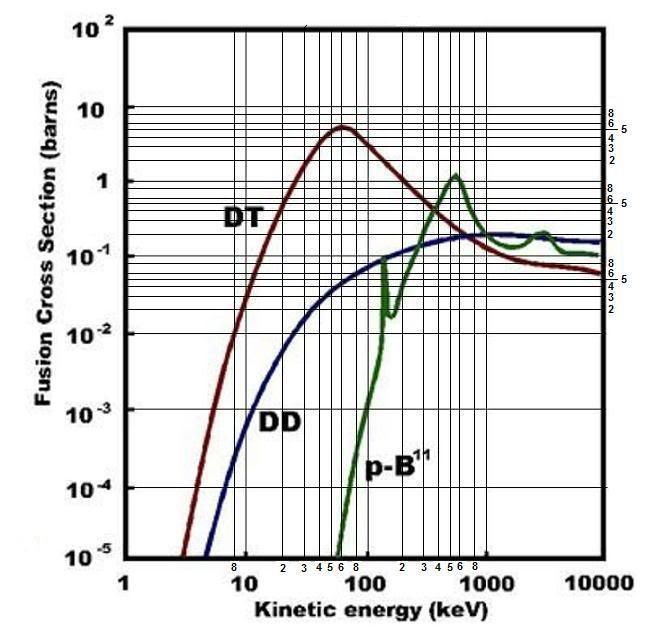chrismb wrote:Art Carlson wrote:MSimon wrote:toks envision making 10% more tritium than they use with a Lithium blanket neutron to tritium converter.
I thought the breeding factor was more like 1.02 or 1.03, but I wouldn't want to argue about it.
Just to clarify, as DT says, it comes down to the 'tune' of the beryllium breeding. Some endothermic neutron breeding WILL be required to maintain enough tritium, if tritium breeding is to be exploited within a fusion reactor. Quite obviously, each and every lone reaction consumes a lone triton and emits a lone neutron. That lone neutron has a lone reaction with lithium which MUST be caught 100% AND result in a tritium if the T were to be 'maintained'. It is self-evident that that process can never be 100%, so one would simply assess how many neutrons DON'T produce T with the Li, then insert a controlled, tuned amount of Be so as to endothermically breed enough neutrons necessary for the purpose. Hence, a 'well-oiled' speculated tokamak of the 22nd century would have a 1.000 tritium breeding factor overall.
The Li6+n->He4+T reaction is, of course, a 1:1 proposition., but there is also the Li7+n->He4+T+n reaction, which gives you a tritium without costing you a neutron. Since 92.5% of natural lithium is Li7, this reaction generally puts you in the plus. You don't get the 2X that MSimon would like because the reaction is endothermic. If you need some extra umph, you can isotopically tailor your lithium or add something that with a large (n,2n) cross section, like Be or lead. A lithium-lead mixture is sometimes proposed as a blanket fluid. If you have cojones, you can also add uranium.
chrismb wrote:To my mind, this whole tritium breeding business presents ITER in a bad light. Having asked the question directly to ITER press office, the reply I got was that no tritium breeding programmes had been planned. There is still 'talk' about it and as I understood the reply, the Japanese and Russians are particularly keen to forward their proposals for breeding modules. However, that ITER has not yet nailed down this matter, yet T breeding should be a fundamental requirement of a 'proof-of-principle' DT-burning machine, (not our Dan Tibbets - he wouldn't be a sustainable source of fuel!!) suggests to me a degree of lax-ness of intellect over the actual objective of ITER.
ITER is "build-to-cost". If they don't give the money you need to do the job right, then you have to decide what is least painful to leave out. They don't have power turbines, either, although nobody thinks it will be a big problem when the time comes to add them.
chrismb wrote:Personally, I think it is easy to critique it - ITER is an all-out engineering solution to problems that would exist for a working machine. Why not just make a working machine out of bog-standard materials, (e.g. stainless steel rather than beryllium), forget the breeding, forget the SC magnets, forget it all and just build a go-darned machine that actually pumps out net-power neutrons on demand! Prove it can be done first, before spending vast wealth on materials and material development!! No-one would question funding materials' engineering after that! (What is left would need to be disposed of more carefully, but once done it would secure an infinite amount of funding for the improvement of those materials.)
One line of argument is that we should be doing
more materials development because it takes a long time and otherwise we will some day know how to build a working tokamak power reactor but we won't know what to build it out of. That would delay the glorious day of fusion power by a couple valuable decades.
chrismb wrote:As I say, I think ITER is actually missing some real thinking in what its objective *could most usefully be*. It is a somewhat blind 'do everything' mass of an idea which has now gained an uncontrollable momentum.
I thought at the time (I'm not sure what I think now) that ITER should have been made 50% more expensive so that it could do enough to be the last step before a prototype reactor. As it is, you will need a "DEMO" to test things like tritium breeding and power production before you can actually build a prototype. That will also cost a decade or more.
I'm not quite clear what you're advocating. Should ITER do less or do more than planned? Both paths have been suggested, but I think the compromise taken is not out of line.
